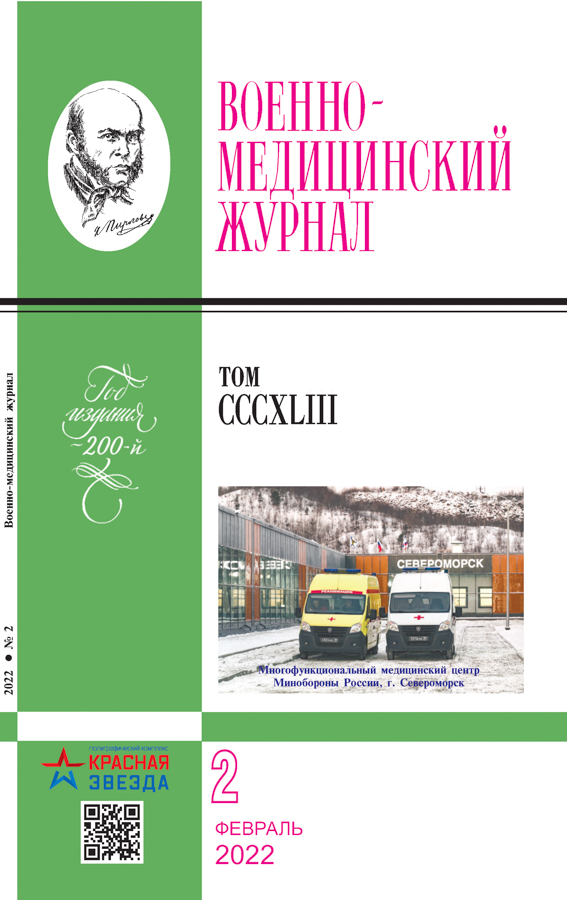Disinfection of postal correspondence as a way to counter postal bioterrorism (Literature review)
- Authors: Makeikin E.V.1, Kanaev K.A.1
-
Affiliations:
- 27th Scientific Center of the Ministry of Defense of the Russian Federation
- Issue: Vol 343, No 2 (2022)
- Pages: 15-21
- Section: Emergency medicine
- URL: https://journals.eco-vector.com/0026-9050/article/view/629606
- DOI: https://doi.org/10.52424/00269050_2022_343_2_15
- ID: 629606
Cite item
Abstract
The article is devoted to the problem of ensuring biological safety when handling postal correspondence. A comparative description of the ways to prevent the defeat of people by pathogenic biological agents through contaminated postal items is given. Requirements for the method of mail correspondence disinfection are formulated. To prevent contamination of technical personnel and final addressees, it was proposed to conduct mail disinfection at correspondence processing points. The requirements for this method of ensuring biological safety when handling postal items are formulated. A comparative analysis of existing disinfectants has been carried out. It is shown that electron-beam disinfection of mail correspondence meets all the requirements.
About the authors
E. V. Makeikin
27th Scientific Center of the Ministry of Defense of the Russian Federation
Author for correspondence.
Email: e.makeykin2305@gmail.com
заслуженный военный специалист РФ, кандидат военных наук, полковник в отставке
Russian Federation, MoscowK. A. Kanaev
27th Scientific Center of the Ministry of Defense of the Russian Federation
Email: e.makeykin2305@gmail.com
кандидат технических наук, майор
Russian Federation, MoscowReferences
- Богач В.В., Беседнова Н.Н. Биотерроризм: мифы и реальность. Гл. VI // Дальневосточн. журн. инфекц. патол. – 2005. – № 7. – С. 128–139.
- Веркина Л.М., Титова С.В., Березняк Е.А. и др. Оценка эффективности СВЧ-излучения для обеззараживания в лабораторных условиях объектов, контаминированных Y. Pestis и V. Cholerae // Дезинфекционное дело. Материалы конференции. – 2014. – № 1. – С. 24–28.
- Использование электромагнитного излучения сверхвысокой частоты для обеззараживания инфицированных медицинских отходов: Методические рекомендации. – М.: Федеральный центр гигиены и эпидемиологии Роспотребнадзора, 2006. – 12 с.
- Ковтун В.А., Колесников Д.П., Шабельников М.П. и др. Почтовый биотерроризм – угроза безопасности современного общества // Воен-мед. журн. – 2018. – Т. 339, № 3. – С. 12–20.
- Котов Ю.А., Соковнин С.Ю. Использование сильноточных наносекундных электронных пучков для радиационно-химической стерилизации // Доклады Академии наук. – 1997. – № 3. – С. 424–426.
- Макейкин Е.В., Канаев К.А., Батинов Д.С. и др. Биологический контроль корреспонденции как инструмент противодействия почтовому биотерроризму // Воен-мед. журн. – 2021. – Т. 339, № 2. – С. 25–30.
- Туманян М.А., Каушанский Д.А. Радиационная стерилизация. – М.: Энергоатомиздат, 1974. – 320 с.
- Федеральный закон «Об основах охраны труда в Российской Федерации» № 181-ФЗ от 17.07.1999 г. URL: http://www.consultant.ru (дата обращения: 03.12.2021).
- Федеральный закон «Об охране окружающей среды» № 7-ФЗ от 10.01.2002 г. URL: http://www.consultant.ru (дата обращения: 03.12.2021).
- Юсупов Р.Г., Юсупова Г.Г. Влияние электромагнитного поля СВЧ на микроскопические грибы и их метаболиты. – Чебоксары: Изд. Чебоксар. гос. агр. ун-та, 2008. – 308 с.
- Elliot L.H., McCormick J.L., Johnson K.M. Inactivation of Lassa, Marburg and Ebola viruses by gamma irradiation // J. Clin, Microb. – 1982. – N 4. – P. 704–708.
- Fairand B. P. Radiation sterilization for health care products: X-ray, gamma, and electron beam // CRC Press, Boca Raton, Fla. – 2002. – P. 57–72.
- Helfinstine S.L., Vargas-Aburto C., Uribe R.M., Woolverton C.J. Inactivation of bacillus endospores in envelopes by electron beam irradiation // Applied and environmental microbiology. – 2005, Nov. – P. 7029–7032.
- Martin J.W., Christopher G.W., Eitzen E.M. History of biological weapons: from poisoned darts to intentional epidemics: Textbooks of military medicine. Medical aspects of biological warfare / Ed. Z.F. Dembek. – Washington, DC: Borden institute. – 2007. – P. 1–20.
- Niebuhr S., Dickson J. Destruction of Bacillus anthracis strain Sterne 34F2 spores in postal envelopes by exposure to electron beam irradiation // Lett. Appl. Microbiol. – 2003. – Vol. 37. – P. 17–20.
- Polley J.R., Fanok A.G. Inactivation of Mycoplasma in seed virus stocks using gamma radiation // Can. J. Microbiol. – 1973. – Vol. 19. – N 6. – P. 709–714.
- Sparrow A.N., Underbrink A.G., Sparrow R.C. Chromosome and cellular radiosensitiviti // Rad. Res. – 1987. – V. 32. – N 4. – P. 915–945.
- Stephen B., Martin J., Dunn C., et al. Germicidal ultraviolet irradiation. Modern and effective methods to combat pathogenic microorganisms // Ashrae journal. – 2008. – Vol. 50. – N 8.
- Sullivan R., Fassolitis A., Larkin E. et al. Inactivation of thirty viruses by gamma radiation // Appl. microbiol. – 1971. – Vol. 22. – N 1. – P. 61–65.
- Xiaohu L., Lijun Q., Yuntao L. et al. Effects of electron beam irradiation on zearalenone and chratoxin A in naturally contaminated corn and corn quality parameters // Toxins. – Basel. – 2017. – N 9 (3).
Supplementary files







